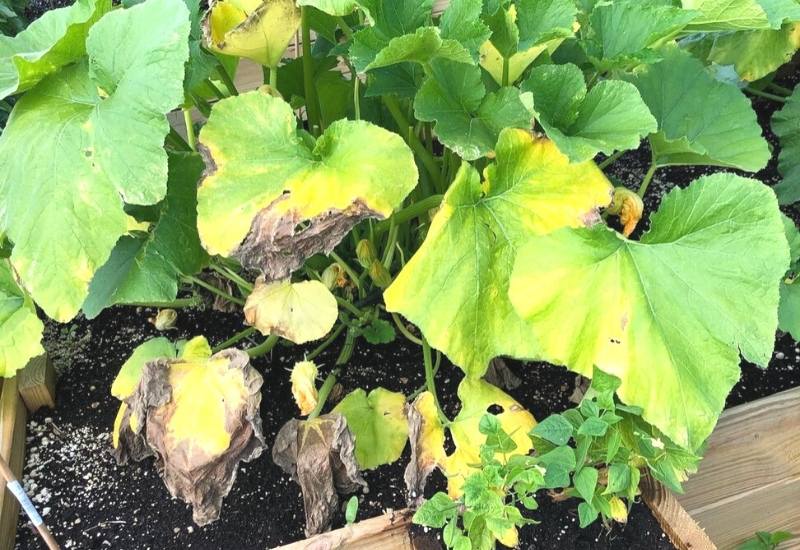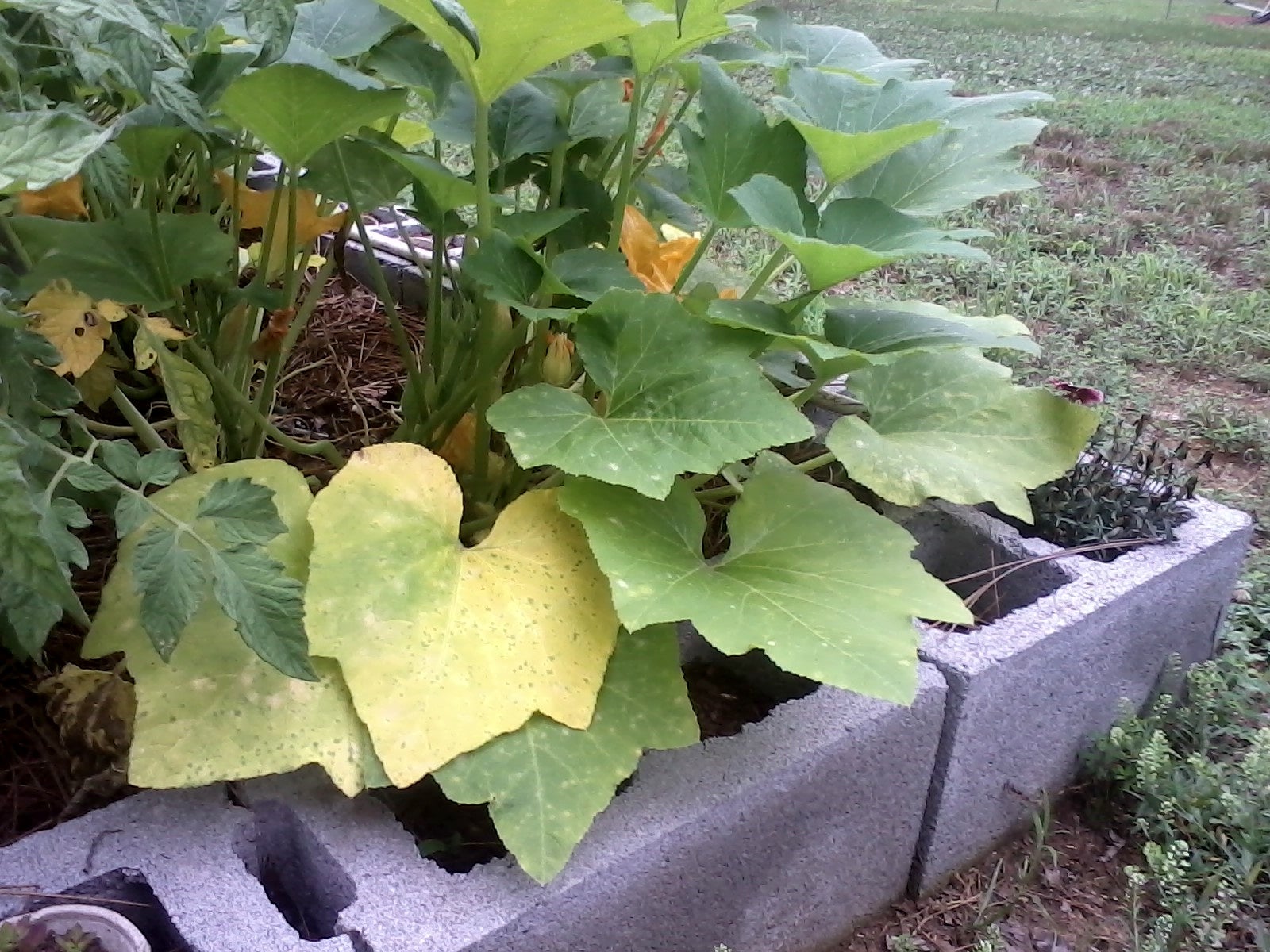Are you puzzled by why your squash leaves are turning yellow? Fear not, for this article aims to shed light on the causes behind this phenomenon. Whether you’re a seasoned gardener or a beginner, understanding what triggers this discoloration can help you take the necessary steps to remedy the situation and ensure the health and vitality of your beloved squash plants. So, let’s get to the root of the issue and uncover the reasons behind yellowing squash leaves – you’ll be a leaf detective in no time!
Understanding the Causes of Yellowing Squash Leaves
Introduction
Overview of Squash Plants
Squash plants are popular garden and agricultural crops that belong to the cucurbit family. With their vibrant green leaves, these plants not only provide shade but also play a crucial role in the overall health and productivity of the plant. When the leaves start turning yellow, it indicates that something is amiss. Understanding the causes of yellowing squash leaves can help identify and address the underlying issues, ensuring the plant’s vitality.
Importance of Healthy Leaves
The leaves of squash plants are essential for photosynthesis, the process through which plants convert light energy into chemical energy. Green chlorophyll pigments within the leaves capture sunlight and transform it into food for the plant. Healthy leaves maintain the plant’s vigor, providing nutrients and energy for growth, flower production, and fruit development. When leaves turn yellow, this vital process is disrupted, and the overall health and productivity of the plant may be compromised.
Environmental Factors
Temperature Extremes
Extreme temperatures can have a profound impact on the health of squash plants. High heat can cause stress and damage to leaves, leading to yellowing. Conversely, cold temperatures can also cause leaves to turn yellow, especially if frost occurs. It’s important to provide adequate shading during hot weather and protect the plants from cold snaps to mitigate temperature-related leaf yellowing.
Light Intensity
Insufficient or excessive light can both contribute to yellowing leaves. Squash plants require about six to eight hours of direct sunlight each day to thrive. If they receive too little light, the leaves may turn yellow. On the other hand, excessive exposure to intense sunlight can lead to leaf burn and subsequent yellowing. Ensuring the plants receive the right balance of light intensity is crucial for maintaining healthy green leaves.
Humidity Levels
Humidity plays a significant role in the overall health of squash leaves. High humidity levels can create a favorable environment for fungal diseases, such as powdery mildew, which can cause yellow patches on the leaves. Conversely, low humidity can result in dry, stressed leaves, leading to yellowing and even leaf drop. It’s important to maintain proper humidity levels to minimize the risk of fungal infestations and leaf yellowing.
Wind and Air Circulation
Strong winds can lead to mechanical damage to squash leaves, causing them to turn yellow. Additionally, poor air circulation can create stagnant conditions, promoting the growth of fungal diseases. By providing adequate support and ensuring proper air circulation around the plants, you can prevent wind-induced damage and minimize the risk of yellowing leaves.
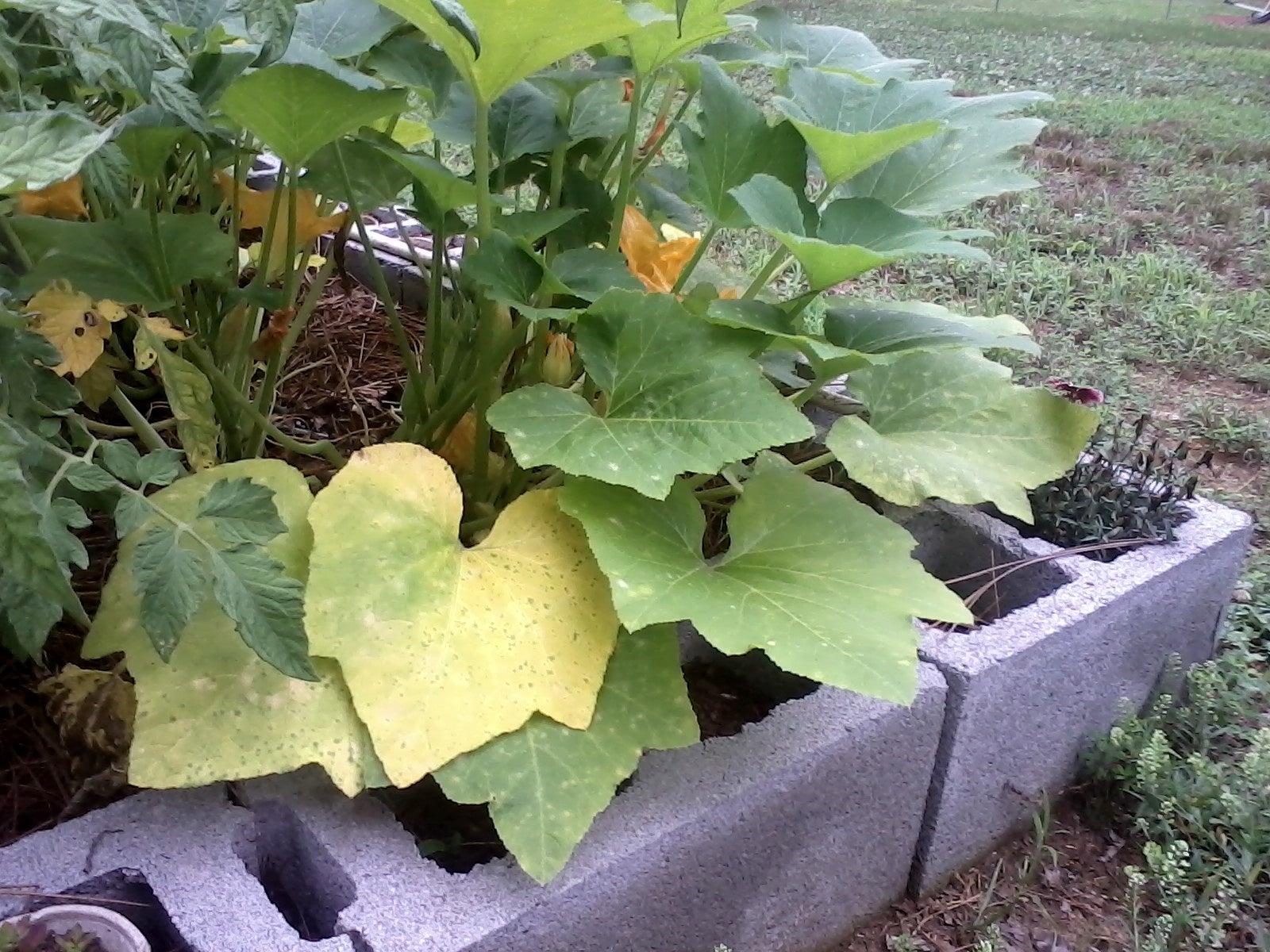
Nutrient Deficiencies
Nitrogen Deficiency
Nitrogen is an essential nutrient for plant growth, and its deficiency can result in yellowing leaves. When a squash plant lacks nitrogen, the older leaves are usually the first to turn yellow, starting from the base of the plant and progressing upwards. Applying a nitrogen-rich fertilizer or adding organic matter can help replenish the nitrogen levels and restore the vibrant green color of the leaves.
Phosphorus Deficiency
Phosphorus is necessary for energy transfer and root development in plants. When squash plants experience a phosphorus deficiency, the leaves may turn yellow, particularly on the older leaves. Additionally, the plants may exhibit stunted growth and reduced fruit production. Providing a phosphorus fertilizer or incorporating bone meal into the soil can help address phosphorus deficiencies and promote healthy leaf color.
Potassium Deficiency
Potassium is crucial for overall plant vigor and disease resistance. A deficiency in potassium can lead to yellowing of the leaves, usually starting from the edges and progressing inwards. The leaves may also develop brown spots or appear scorched. Applying a potassium-rich fertilizer or incorporating potassium sulfate into the soil can help correct potassium deficiencies and restore the vibrant green color of the leaves.
Micronutrient Deficiencies
Other essential micronutrients, such as iron, manganese, zinc, and magnesium, play crucial roles in plant health. Deficiencies in these micronutrients can manifest as yellowing leaves, often with specific patterns or characteristics associated with each deficiency. Conducting a soil test and providing targeted micronutrient treatments can help address these deficiencies and prevent yellowing of squash leaves.
Pest and Disease Infestations
Squash Bugs
Squash bugs are common pests that feed on sap from squash plants, causing yellowing and wilting of leaves. They may also leave dark fecal spots on the leaves. Regularly inspecting plants for the presence of squash bugs and taking appropriate pest control measures, such as handpicking or using insecticidal soaps, can help prevent infestations and preserve leaf health.
Aphids
Aphids are tiny, sap-sucking insects that can infest squash plants, causing leaves to curl, distort, and turn yellow. These prolific pests reproduce rapidly, so early detection and intervention are crucial. Applying insecticidal soaps or using natural predators, such as ladybugs, can help control aphid populations and prevent damage to the leaves.
Powdery Mildew
Powdery mildew is a fungal disease that commonly affects squash plants, especially during periods of high humidity. It presents as a white powdery coating on the leaves, causing them to turn yellow and eventually wither. Proper airflow, regular monitoring, and applying fungicides at the first signs of infection can help manage powdery mildew and preserve leaf health.
Viral Diseases
Several viral diseases, such as squash mosaic virus and cucumber mosaic virus, can cause yellowing and mottling of squash leaves. These diseases are typically spread by insects and require preventative measures, such as providing physical barriers or using insecticides, to minimize their impact on leaf health.
Bacterial Infections
Bacterial infections, such as bacterial wilt and bacterial leaf spot, can also lead to yellowing of squash leaves. These infections often present as black lesions on the leaves, accompanied by wilting and yellowing. Proper hygiene practices, such as careful handling to avoid plant injury and removing infected plant material, can help prevent the spread of bacterial infections and maintain leaf health.
Fungal Pathogens
Various fungal pathogens, such as fusarium wilt and downy mildew, can cause yellowing and wilting of squash leaves. These diseases often thrive in humid conditions and can spread rapidly. Implementing proper sanitation practices, such as avoiding overhead watering and providing proper air circulation, along with targeted fungicide applications, can help control fungal pathogens and preserve leaf health.

Overwatering or Underwatering
Effects of Overwatering
Overwatering squash plants can lead to waterlogged soil and poor root health, resulting in yellowing leaves. Excessive moisture prevents the roots from obtaining oxygen, eventually causing rot. The lack of healthy roots impacts the plant’s ability to absorb nutrients, often leading to yellowing and wilting leaves. Ensuring proper drainage and watering according to the plant’s needs can help prevent yellowing caused by overwatering.
Effects of Underwatering
Underwatering squash plants can also cause yellowing leaves. When plants do not receive sufficient water, they may conserve resources by sacrificing some leaves. These leaves will begin to turn yellow and eventually die off. Regularly monitoring soil moisture levels and providing adequate water, especially during dry periods, can prevent leaf yellowing caused by underwatering.
Proper Watering Techniques
To maintain healthy leaves, it’s important to employ proper watering techniques for squash plants. Water the plants deeply, ensuring the soil is evenly moist but not waterlogged. Allow the soil to dry slightly between waterings to promote a healthy balance of moisture and prevent fungal issues. Direct water towards the base of the plant, avoiding foliage contact to minimize humidity-related diseases.
Soil Conditions
Poor Drainage
Squash plants thrive in well-draining soil. Poor drainage can lead to waterlogging, suffocating the roots and impeding nutrient uptake. As a result, the leaves may turn yellow. Amending the soil with organic matter, such as compost, can improve drainage and prevent yellowing caused by poorly drained soil.
Soil pH Imbalance
Squash plants prefer a slightly acidic to neutral soil pH range of 6.0 to 7.0. A pH imbalance can affect nutrient availability, leading to yellowing leaves. Conducting a soil test can help determine the pH level, and necessary adjustments can be made using appropriate soil amendments, such as lime to raise pH or sulfur to lower pH.
Soil Compaction
Compacted soil can hinder root growth and limit nutrient absorption, resulting in yellowing leaves. Cultivating the soil and incorporating organic matter can help break up compacted soil, improving root development and nutrient availability. Regular aeration and avoiding excessive foot traffic around the plants can also prevent soil compaction.
Organic Matter Content
The organic matter content of the soil directly affects its fertility and structure. Insufficient organic matter can lead to nutrient deficiencies and poor water-holding capacity, resulting in yellowing leaves. Adding compost or well-rotted manure can increase organic matter content, enhancing soil fertility and promoting healthy leaf color.
Nutrient Availability
The availability of nutrients in the soil is crucial for plant health. Imbalances or deficiencies can manifest as yellowing leaves. Conducting a soil test can help identify nutrient deficiencies or excesses. Based on the results, appropriate fertilizers can be applied to supplement the soil with essential nutrients and promote healthy leaf growth.
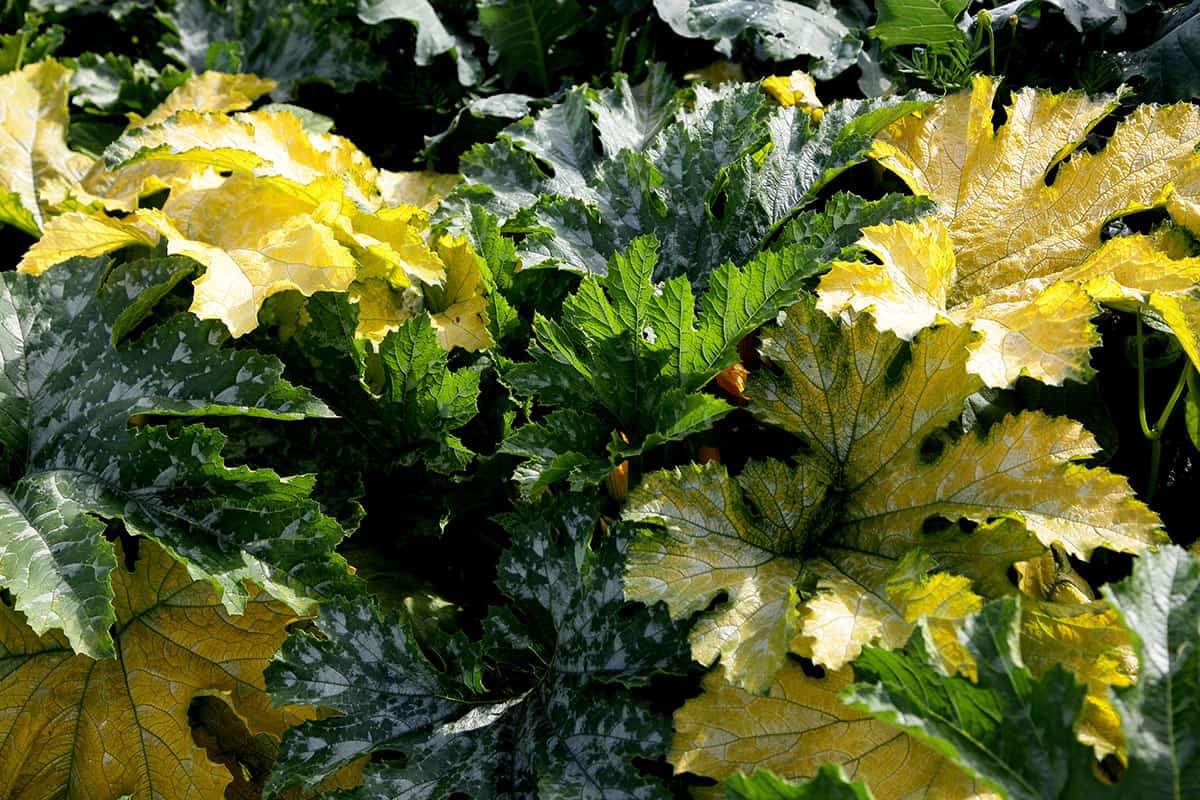
Seasonal Changes
Leaf Aging and Natural Yellowing
As squash leaves age, they naturally begin to turn yellow and eventually wither. This process is a normal part of the plant’s lifecycle. Older leaves closer to the base of the plant are typically the first to exhibit this natural yellowing. Regularly removing yellowing or dead leaves can help redirect the plant’s energy towards new growth and reduce the risk of disease or pest infestations.
Cold Weather Induced Yellowing
Cold temperatures can also cause squash leaves to turn yellow. Frost or extended periods of chilly weather can damage the leaves, leading to yellowing and even plant death. Providing adequate protection, such as using row covers or mulching, can help safeguard the plants from cold weather-induced yellowing and preserve leaf health.
Heat Stress and Sunburn
Excessive heat and intense sunlight can cause stress to squash plants, resulting in leaf yellowing and sunburn. In hot climates or during heatwaves, providing shade or erecting temporary coverings can help protect the plants and prevent leaf damage. Proper watering and maintaining adequate humidity levels can also help mitigate the effects of heat stress.
Genetic Factors
Leaf Variability in Different Squash Varieties
Different squash varieties exhibit natural variations in leaf color. Some varieties may naturally have yellow-tinted or variegated leaves, which should not be mistaken for a health issue. Familiarizing yourself with the characteristics and leaf color of the specific squash variety you are growing can help distinguish between natural leaf variability and abnormal yellowing.
Genetic Predisposition to Yellowing
In some cases, certain squash varieties may be genetically predisposed to yellowing leaves. This can be due to inherent characteristics or traits inherited from parent plants. While it may not be possible to completely eliminate yellowing in these varieties, providing optimal growing conditions and managing other factors can help minimize leaf yellowing and promote overall plant health.
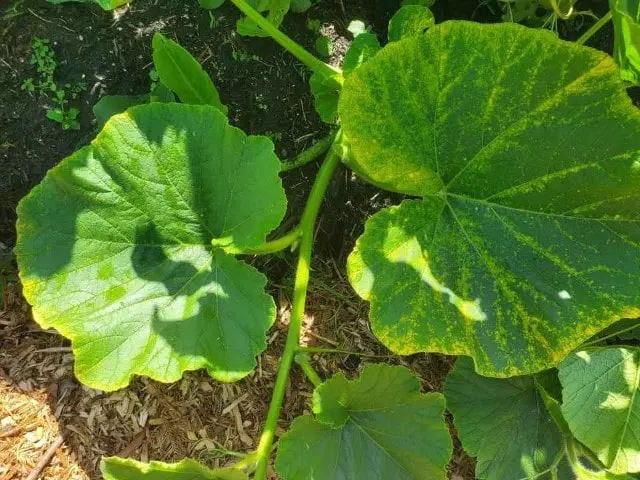
Management and Prevention
Proper management and preventative measures are crucial for maintaining healthy squash leaves. Regularly monitor the plants for signs of stress, pests, or diseases. Practice good gardening hygiene by removing infected plant material or pests promptly. Adequately water the plants, providing proper drainage and avoiding overwatering or underwatering. Ensure the soil is well-nourished and balanced, incorporating organic matter and addressing nutrient deficiencies. Protect the plants from extreme temperature fluctuations and maintain optimal light intensity, humidity, and air circulation. By implementing these strategies, you can effectively manage and prevent yellowing of squash leaves.
Conclusion
Yellowing squash leaves can be caused by various factors, including environmental conditions, nutrient deficiencies, pest and disease infestations, watering practices, soil conditions, seasonal changes, and even genetic factors. Identifying the specific cause or combination of causes for leaf yellowing is essential in order to implement the appropriate management and prevention strategies. By monitoring plant health, providing optimal growing conditions, and promptly addressing any issues that arise, you can maintain vibrant green squash leaves and ensure the overall health and productivity of your plants.
